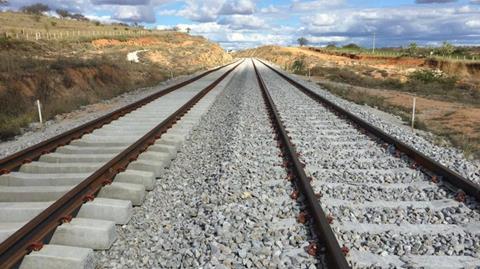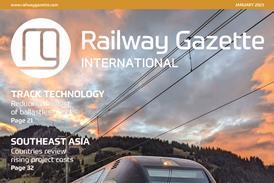
BRAZIL: A 35-year ‘sub-concession’ to operate freight services on the 537 km section of Ferrovia de Integração Oeste-Leste between Caetité and the port of Ilhéus is attracting more interest than expected.
The bid auction is due to take place in São Paulo on April 8 with contract signing pencilled in for July 23. The new line through Bahia state is about 75% complete and around R$3∙3bn will be needed to complete outstanding work. Construction of the Ilhéus – Caetité and Caetité – Barreiras sections of FIOL is in the hands of Valec, but an agreement was reached last year for part of the Caetité – Barreiras section to be built by the Brazilian army.
Iron ore traffic
When the National Land Transport Agency ANTT published details of the sub-concession on December 16, its initial assessments suggested that only a single company, Bahia Mineraçao, would be likely to submit a bid.
Bahia Mineraçao is a Brazilian subsidiary of Luembourg-headquartered Eurasian Resources Group which launched pilot production at its Pedra de Ferro open pit iron ore mine south of Caetité in mid-December. It is expected to bid for the FIOL freight operating concession as part of a consortium.
Initial estimates for traffic over the first section of FIOL between Ilhéus and Caetité are for 17 million tonnes in 2024, rising to 34∙4 million tonnes in 2054. Ore from the Pedra de Ferro mine is of high quality with low levels of contaminants and it is understood to be well suited to steel mills in the Middle East.
Integral to the project is construction of the Porto Sul deep-water port in the Aritágua district of Ilhéus which would be served by a 12∙6 km branch from FIOL. Ore would be unloaded via a twin-wagon rotary dumper and taken to a stockyard with a capacity of 1∙4 million tonnes. The port has been designed to accommodate vessels of up to 220 000 tonnes deadweight.
Agricultural traffic in prospect
However, a more recent assessment suggests that there is likely to be interest in the sub-concession from other companies. These include VLI, a consortium of Vale, Mitsui, investment fund FI-FGTS, asset investor Brookfield and the Brazilian Development Bank, BNDES. Rumo is also reported to be looking at the project but has made no public announcement.
This additional interest has been generated by signals from the Brazilian government that it intends to complete the remaining two sections of FIOL: the 485 km from Caetité to Barreiras, where 36% of work has been completed, and the 505 km from Barreiras to Figueirópolis, where a connection would be made with the Norte-Sul Railway.
Were this third section to be completed, options for additional traffic would open up. This includes agricultural produce for export from the initial section of Ferrovia de Integraçao Centro-Oeste, where Valec is expected to start construction in April over the 383 km between Água Boa in Mato Grosso state and Mara Rosa in Goiás. Completion is expected in 2026, opening up the possibility of trains carrying agricultural produce for export running through to Ilhéus via a junction with the Norte-Sul Railway at Mara Rosa, from where they would travel north to Figueirópolis and then east towards the Atlantic port.
An alternative under study would see the alignment of the third section of FIOL altered to provide a direct connection from Barreiras to FICO at Mara Rosa, which would shorten the route to the coast and avoid charges for use of the Norte-Sul Railway.




















